Represented by milling, turning and polishing, mainly including traditional Fan Cheng method of milling and grinding and polishing; CNC milling, turning, precision grinding and polishing; computer-controlled polishing, etc.. Especially for CNC polishing, with different polishing media can be divided into small abrasives, stress disk, ion beam, plasma, magnetorheological, liquid jet polishing.
It is characterized by relatively high efficiency, interoperability with traditional optical processing is easy to be accepted, high flexibility, suitable for the development of prototype and small and medium-sized batch production. However, the consistency of the product is poorer, and the requirements of the operator are higher.
Glass thermoforming, optical plastic injection molding, thermal deposition and curing molding. It is characterized by extremely high efficiency, good consistency of the finished product, lower requirements for the operator, and is suitable for mass production. However, the requirements for molds are high, the initial investment is large and the process is more complex.
Additional material method (additive method):
Vacuum coating and copy molding. In essence, it is the closest to the sphere on the basis of an additional layer of non-spherical degree and refractive index to match the thin layer of material. It is characterized by good consistency of the workpiece, low requirements for equipment and good flexibility. It is suitable for the production of small and medium batches and reflective elements. However, the additional layer must be matched with the substrate material to limit the application.
The main body of the machine is of gantry structure, the moving parts adopt precision guideway combined with high-precision grating feedback, and 8-axis controller realizes any axis combination interpolation and integrates online contour measurement system. The process system is open, with multiple trajectory selection, multi-format data compatibility, variable parameter manipulation and optimization functions, capable of realizing the precision manufacturing of optical glass, microcrystalline, silicon carbide, quartz and other materials for optical components, especially for high-quality optical coaxial, off-axis aspheric components to develop an adaptive machining model, to achieve the polished surface shape accuracy of more than 1/50λ (RMS, λ = 632.8nm).
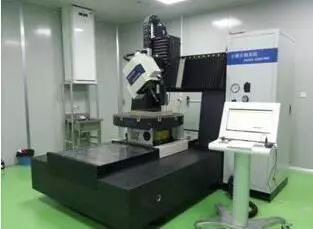
For optical glass, microcrystalline, silicon carbide, quartz and other materials can obtain a better surface roughness and high surface precision. It is especially suitable for ultra-precision processing of high-quality optical coaxial and off-axis aspherical components.
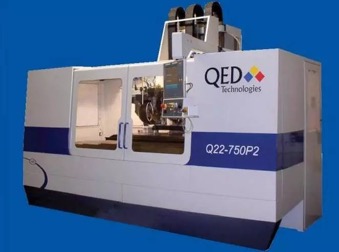
Magnetic jet polishing is a combination of jet technology and magnetorheological technology, the use of low-viscosity magnetorheological fluid in the external magnetic field under the action of magnetorheological effect, the apparent viscosity increases to increase the stability of the surface of the jet beam, mixed with abrasive grains of magnetorheological fluid in the nozzle at the action of the axial magnetic field to form a quasi-coherent hardening of the jet beam sprayed to the surface of a certain distance from the workpiece, with the help of the abrasive grains of the high-speed collision of the shear action of material removal, in a controlled manner, and to achieve a good surface roughness. Removal, in a controlled manner to achieve polished surface finishing.
Said so much, let's take a look at the effect of magnetic jet:
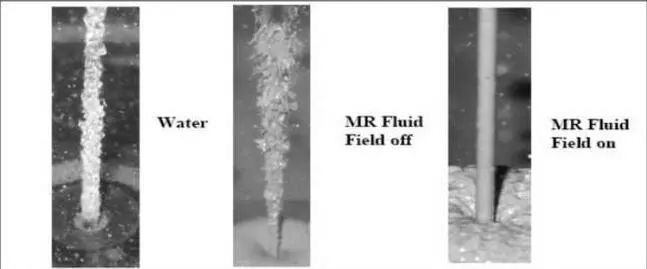
This is a very high level of polishing, the domestic Chengdu Optoelectronics do, through a series of motors above the plate pulling the stress disk disk surface above the uniform distribution of some of the columns, the columns are connected through the wire, these wires can be tightened by the motor relaxation, so that you can control the deformation of the disk surface, so that the disk surface and the workpiece is better fit to achieve precision polishing. The disadvantage of stress disk polishing is that the control is too complex - look at the dizzy ah!
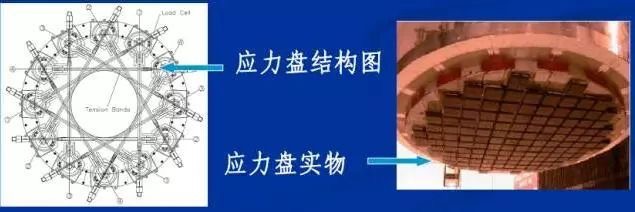
Ion source emitted by a certain energy and spatial distribution of the ion beam stream bombardment of the surface of the workpiece, the ion incident on the surface of the workpiece in a certain depth and the workpiece atoms collision, in this collision process, the incident ion will transfer its own energy to the workpiece atoms, when the workpiece atoms to get more energy than the lattice binding energy, the workpiece atoms will be out of the lattice binding to continue to move and other workpiece atoms occurring in cascade Collision, that is, repeat the above action, when the energy transferred to the next atom is greater than the lattice binding energy, the next atom will also leave the original position to start the movement, if the energy gained by the atom is not enough to overcome the lattice binding energy, the energy gained by the atom will not be able to continue to transfer, but only in the form of phonons released. In this process the energy between ions and atoms, atoms and atoms transfer each other, when in the surface of the workpiece atoms to obtain the energy along the direction of the mirror normal component is greater than the material surface binding energy, lattice binding energy, the atom will fly away from the surface of the workpiece.
To put it bluntly is the material surface of the atom one by one to remove (a little exaggerated).
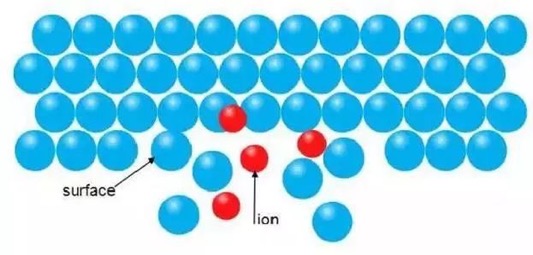
The above mentioned is mainly a variety of polishing, just aspheric processing in a process only, other materials milling molding, rough grinding, fine grinding below is polishing, and then there are coating and other processes. In addition to this there are glass thermoforming, injection molding, heat sinking, replication and other technologies.